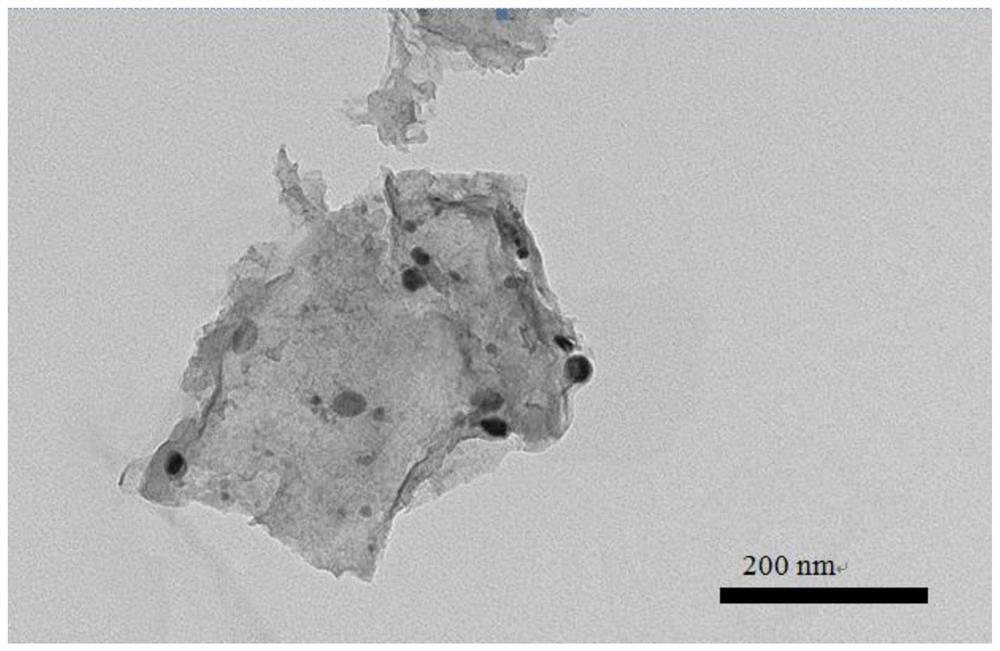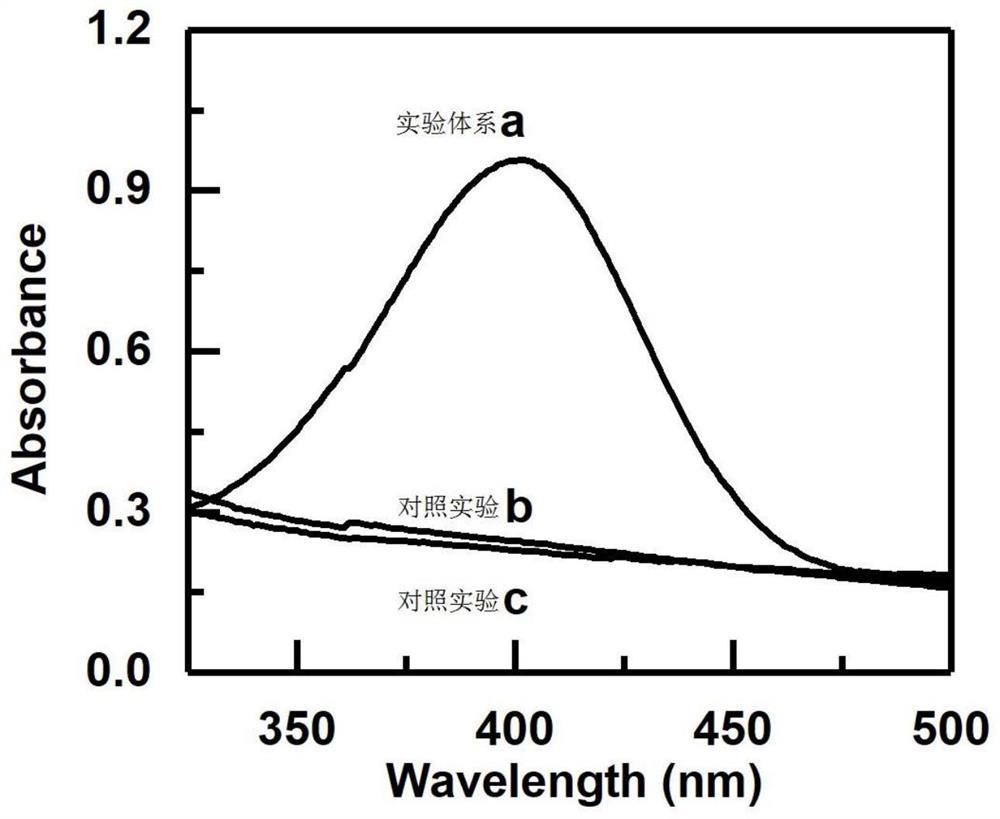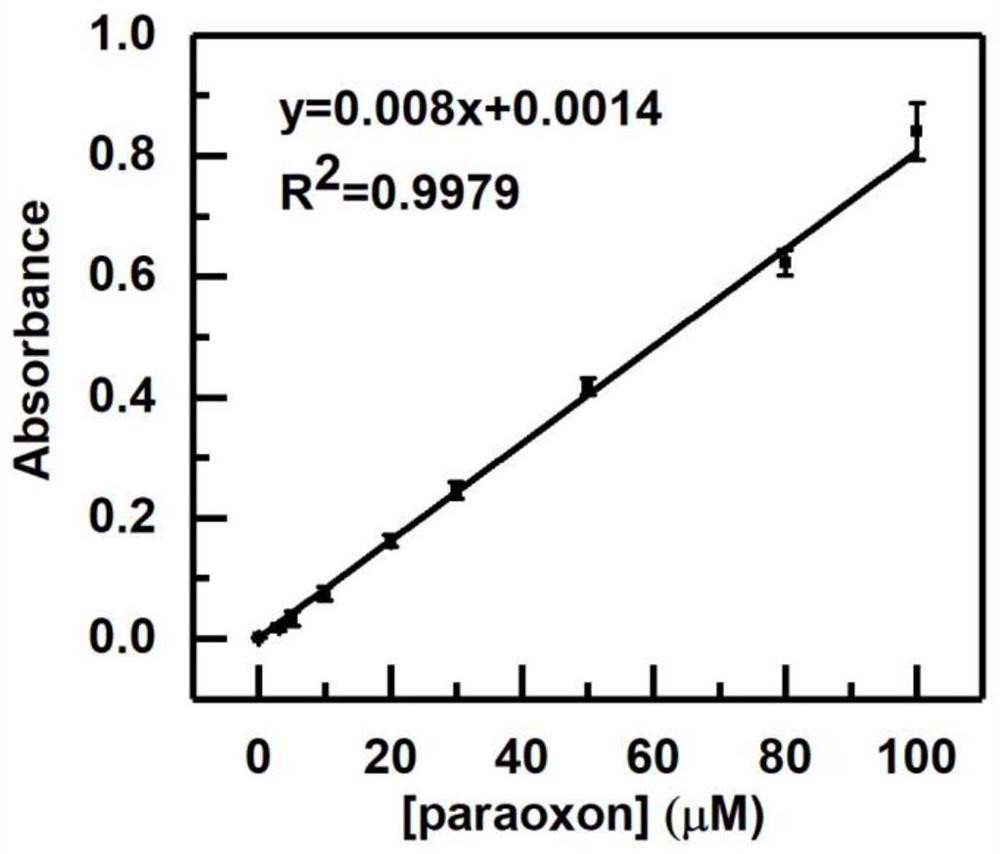A ce-n-c nanozyme and its application in the detection of organophosphorus pesticide residues
A technology of organophosphorus pesticides and nano-enzymes, which is applied in the direction of color/spectral characteristic measurement, analysis by making materials undergo chemical reactions, and material analysis by observing the impact on chemical indicators, etc., to achieve convenient and efficient detection and mild reaction conditions , not easy to preserve the effect
- Summary
- Abstract
- Description
- Claims
- Application Information
AI Technical Summary
Problems solved by technology
Method used
Image
Examples
Embodiment 1
[0029] Example 1 Synthesis of Ce-N-C Nanozyme
[0030] (a) Weigh 3g glucose (Glucose), 8g dicyandiamide (DICY) in a 100mL beaker, then add 3mmol / L Ce (SO 4 ) 2 ·4H2 The O solution was stirred at room temperature for 10 h to obtain a homogeneous solution product. The obtained product was centrifuged and dried under vacuum to obtain a white powder.
[0031] (b) Weighing the white powder obtained in step (a) and placing it in a clean quartz boat, and placing the quartz boat in a tube furnace, in N 2 Under the protection of the atmosphere, heated to the target reaction temperature of 800 °C at a heating rate of 4 °C / min, and continued to keep the temperature for 2.5 h; during the cooling process, continue to feed N 2 ; After the tube furnace is naturally cooled to room temperature, the black powder in the quartz boat is collected, which is Ce-N-C nanozyme; the obtained Ce-N-C nanozyme is observed by transmission electron microscope, and the figure 1 The TEM image of the Ce-N-C ...
Embodiment 2
[0032] Example 2 Synthesis of Ce-N-C Nanozyme
[0033] (a) Weigh 1 g of glucose (Glucose) and 5 g of dicyandiamide (DICY) into a 100 mL beaker, then add 1 mmol / L Ce (SO 4 ) 2 ·4H 2 The O solution was stirred at room temperature for 8 h, and the obtained product was centrifuged and dried in vacuo to obtain a white powder.
[0034] (b) Weighing the white powder obtained in step (a) and placing it in a clean quartz boat, and placing the quartz boat in a tube furnace, in N 2 Under the protection of the atmosphere, heated to the target reaction temperature of 700 °C at a heating rate of 3 °C / min, and continued to hold for 2 h; during the cooling process, continue to feed N 2 ; After the tube furnace is naturally cooled to room temperature, the black powder in the quartz boat is collected, which is the Ce-N-C nanozyme.
Embodiment 3
[0035] Example 3 Synthesis of Ce-N-C Nanozyme
[0036] (a) Weigh 5g glucose (Glucose), 10g dicyandiamide (DICY) in a 100mL beaker, then add 5mmol / L Ce (SO 4 ) 2 ·4H 2 The O solution was stirred at room temperature for 12 h, and the obtained product was centrifuged and dried in vacuo to obtain a white powder.
[0037] (b) Weighing the white powder obtained in step (a) and placing it in a clean quartz boat, and placing the quartz boat in a tube furnace, in N 2 Under the protection of the atmosphere, heated to the target reaction temperature of 950 °C at a heating rate of 5 °C / min, and continued to hold for 3 h; during the cooling process, continue to feed N 2 ; After the tube furnace is naturally cooled to room temperature, the black powder in the quartz boat is collected, which is the Ce-N-C nanozyme.
PUM
 Login to View More
Login to View More Abstract
Description
Claims
Application Information
 Login to View More
Login to View More - R&D
- Intellectual Property
- Life Sciences
- Materials
- Tech Scout
- Unparalleled Data Quality
- Higher Quality Content
- 60% Fewer Hallucinations
Browse by: Latest US Patents, China's latest patents, Technical Efficacy Thesaurus, Application Domain, Technology Topic, Popular Technical Reports.
© 2025 PatSnap. All rights reserved.Legal|Privacy policy|Modern Slavery Act Transparency Statement|Sitemap|About US| Contact US: help@patsnap.com



